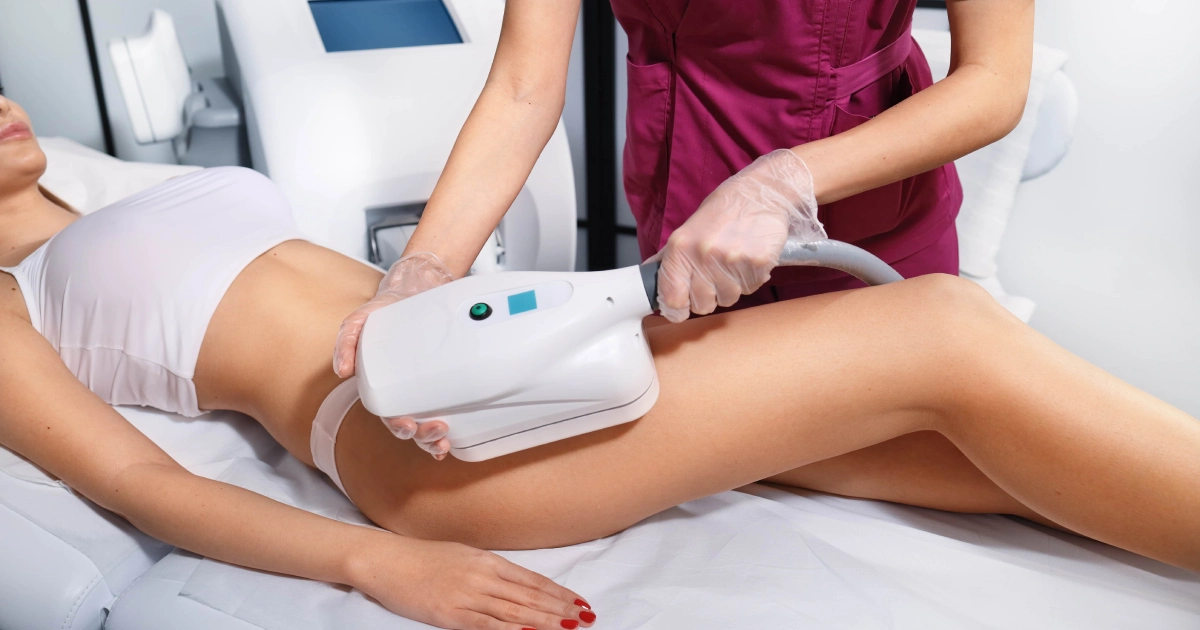

Psoriasis is one of the medical skin conditions that tremendously damage your look. Still, most people gloss over this condition when they encounter it as one of a treatment’s targeted issues. This post will discuss the details of psoriasis – what it looks like, its causes, how to diagnose it, how to treat it, and how to prevent it.
Psoriasis is a chronic, genetic, and non-contagious skin condition. Patches of thickly red skin with silvery scales are signs of psoriasis. Patches can appear everywhere but are most frequently observed on the elbows, knees, scalp, lower back, cheeks, palms, and soles of the feet (fingernails, toenails, and mouth). Plaque psoriasis is the most prevalent type of psoriasis.
Cells rapidly accumulate on the skin’s surface due to psoriasis, resulting in thick, silvery scales and painfully itchy, dry, and red regions. You may have periods when your psoriasis symptoms ease or go into remission, alternating with times when your psoriasis worsens.
There are different types of psoriasis, among which are:
Plaque psoriasis, the most prevalent type of psoriasis, results in scale-covered, dry, elevated skin patches (plaques). They typically appear on the scalp, lower back, elbows, and knees. Depending on the skin tone, the patches have different colors.
The afflicted skin may heal with temporary color changes (post-inflammatory hyperpigmentation) on brown or black skin. The plaques can develop anywhere on your body, including the soft tissue inside your mouth and genitalia, and they can itch or even be painful. In severe situations, your joint-area skin could break open and bleed.
Guttate psoriasis is most common in those under 30 and is typically brought on by a bacterial infection like strep throat. Small, water-drop-shaped lesions on your scalp, arms, legs, and trunk are its telltale sign. The lesions aren’t as thick as usual plaques and are covered in fine scales.
If you have persistent respiratory infections, you may experience a single outbreak that resolves on its own, or you may experience repeated bouts.
Inverse psoriasis mainly impacts the groin, buttocks, and breast skin folds. Particularly in overweight people, it results in smooth areas of irritated skin that get worse with friction and perspiration. Fungi may bring on this kind of psoriasis.
Pustular psoriasis may manifest as large patches or as more localized lesions on your hands, feet, or fingertips. Usually, it spreads quickly, and a few hours after your skin turns red and painful, pus-filled blisters start to appear. The blisters may recur every few days or weeks, but they usually dry out within a day or two.
Fever, chills, intense itching, and exhaustion can also be symptoms of generalized pustular psoriasis.
Common psoriasis symptoms and indicators include:
Psoriasis doesn’t have a clear cause. However, according to researchers, genetics and environmental factors are considered to be involved.
Research suggests that emotional stress, skin injuries, infections, and specific medications might trigger the disease. Although not everyone with psoriasis has a family history of the ailment, some people are born with a genetic propensity and are predisposed to the condition.
According to more research, the illness is caused by aberrant white blood cells in the bloodstream, which cause inflammation. Skin cells grow more quickly than usual in psoriasis, which is thought to be an immune system issue. Infection-fighting cells accidentally attack healthy skin cells.
If the patient has type II diabetes mellitus, this inflammation may also be linked to cardiovascular and rheumatic conditions.
Your doctor will inquire about your health and look at your skin, hair, and nails. Then, your medical professional could take a little skin sample (biopsy) for microscopic analysis. This thorough examination helps rule out other conditions and identify the type of psoriasis.
Topical medications or laser phototherapy are both options for treating psoriasis.
Psoriasis is safely and successfully treated with the laser. A handpiece that lies directly on the patient’s skin allows the medical professional to provide a highly focused, high dosage of UV light to psoriatic lesions. It successfully treats individuals with mild to moderate ailments and is excellent for getting to difficult-to-treat areas, including knees, elbows, and the scalp.
A UVB light box could be used as a further treatment. The skin is regularly exposed to ultraviolet light under a doctor’s supervision as part of this light therapy. UVB reaches the skin and decreases the formation of damaged skin cells.
Laser phototherapy is FDA-approved, and most insurance companies pay for the treatment.
To treat moderate forms of psoriasis, topical medications like anthralin, coal tar, vitamin A and vitamin D derivatives, and steroids may be used. However, these medications are frequently combined with light therapy and medications like retinoids and antimetabolite medications to treat advanced psoriasis.
Most treatments last between five and seven minutes, twice weekly, for several weeks. Most patients experience clearance after six to ten treatments, and they discover that results often last four to six months. Even though psoriasis is seldom cured, suitable treatment can bring about partial or complete remissions that last very long.
Effective psoriasis therapy involves regular check-ups and assessments. Oral medicines may be necessary for severe psoriasis.
One of the more recent treatments, known as “biologics,” is now frequently used to treat moderate to severe psoriasis. These are injected every other week or even less often. Most psoriasis lesions can be safely cleared with these more recent treatments.
As a precaution, regular blood tests and Tb testing are necessary. An even more recent procedure utilizes the Otezla tablet. Your dermatologist must thoroughly assess the condition of your psoriasis before they can recommend the course of treatment that will work best for you.
Regular moisturizing, avoiding too much sun, taking care of your body to stave off infections, reducing emotional and physical stress, and keeping an eye on any prescription medications for potential side effects are the best ways to prevent the formation of psoriasis.
Kay Dermatology offers thorough psoriasis evaluation and treatment. If you want a consultation, contact Kay Dermatology at 818-238-2350 or use our online contact form.
